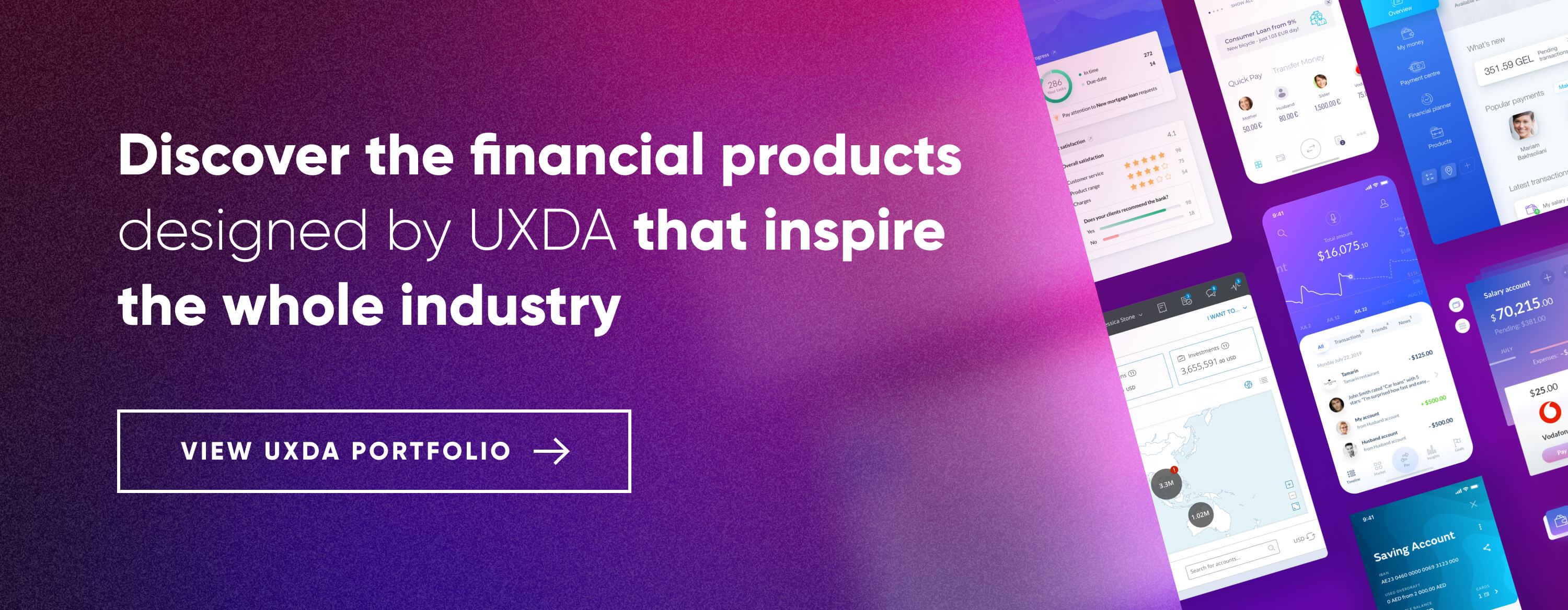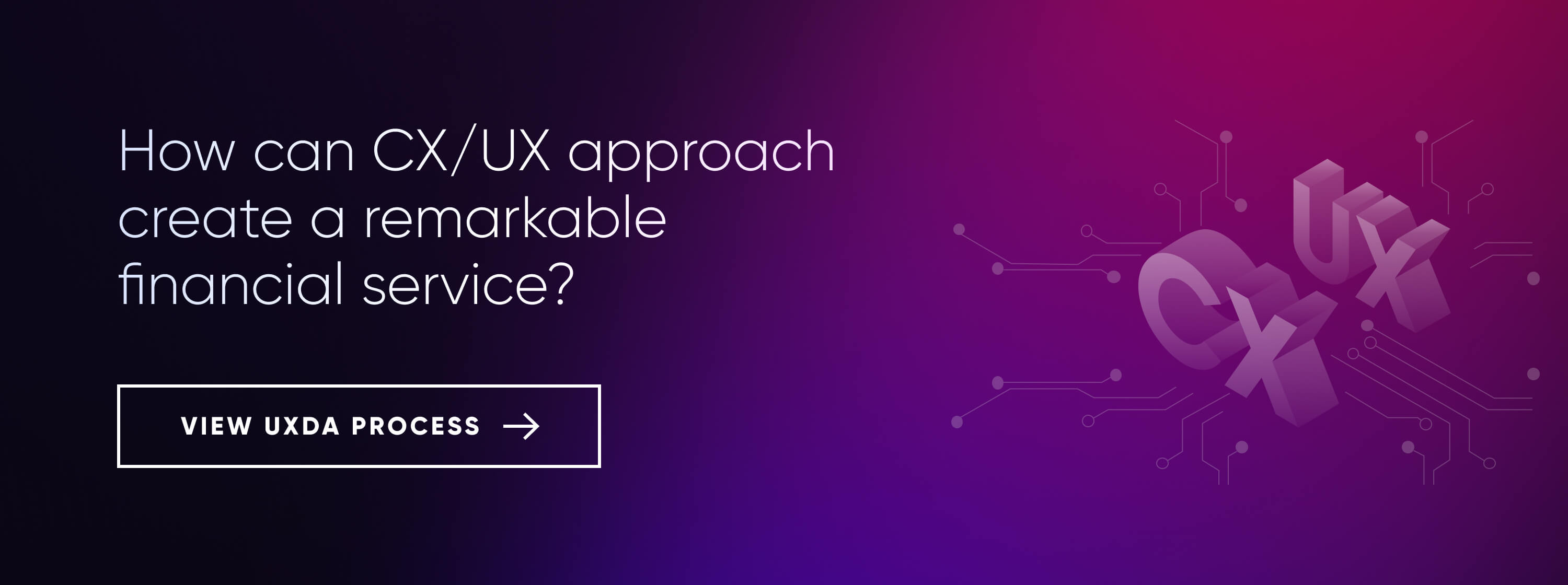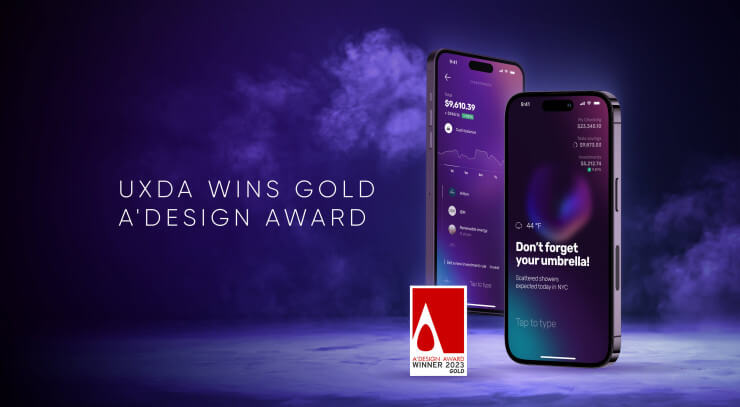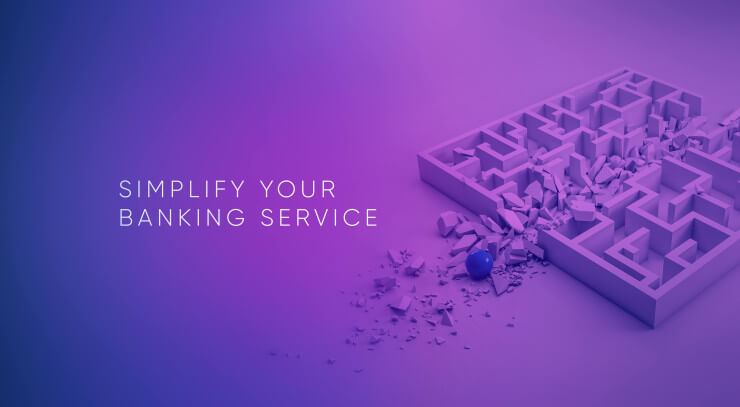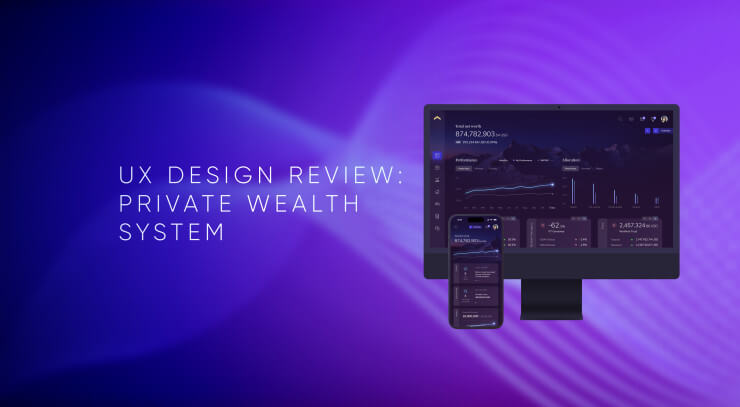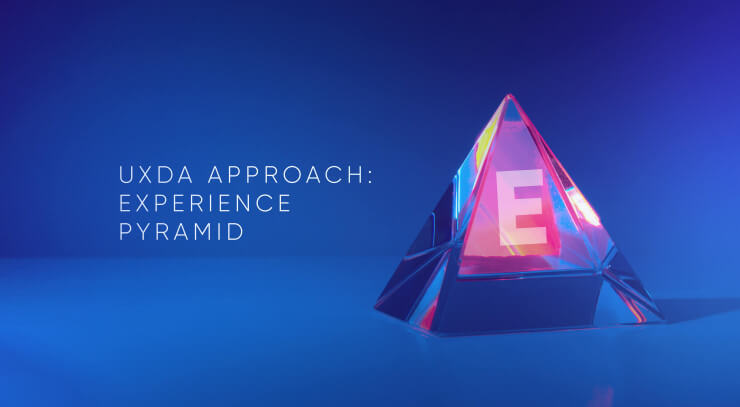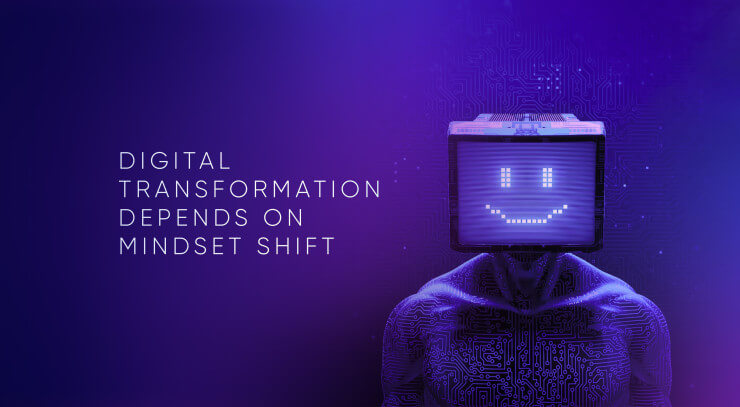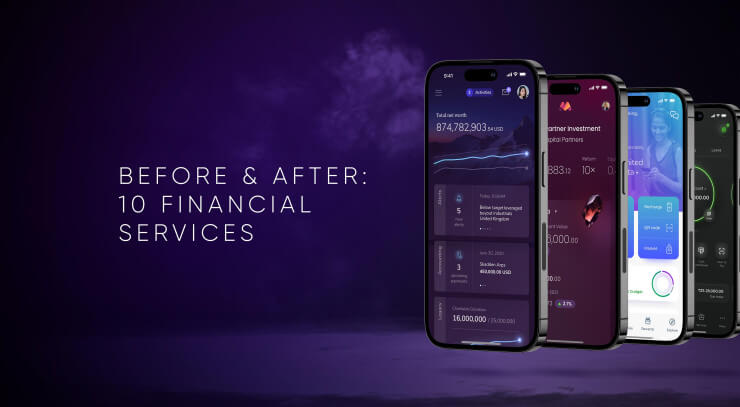Customer centricity is the bridge that bonds financial brands with their customers. Never before has it been so important to ensure a truly caring relationship between financial institutions and people consuming their digital products. In a way, the digital channels are replacing PR and marketing, becoming the new face of the financial brands. What does it take to create a banking app that bonds clients and financial institutions? And, how does user experience in digital banking determine whether there will be a long-lasting relationship between financial brands and their customers? We sat down with UXDA Founder and CEO, UX strategist Alex Kreger to find out answers to the most asked questions about the user experience in banking and other financial services.
UXDA's Chief Inspiration Officer Monika Calite and UXDA's founder and CEO Alex Kreger sat down for an episode of the Financial UX Podcast, to discuss the top questions about the role of user centricity in digital banking and digital transformation in the financial industry.

Listen to this Financial UX Podcast episode:
Time codes of the main topics covered, so you can jump right to what interests you the most:
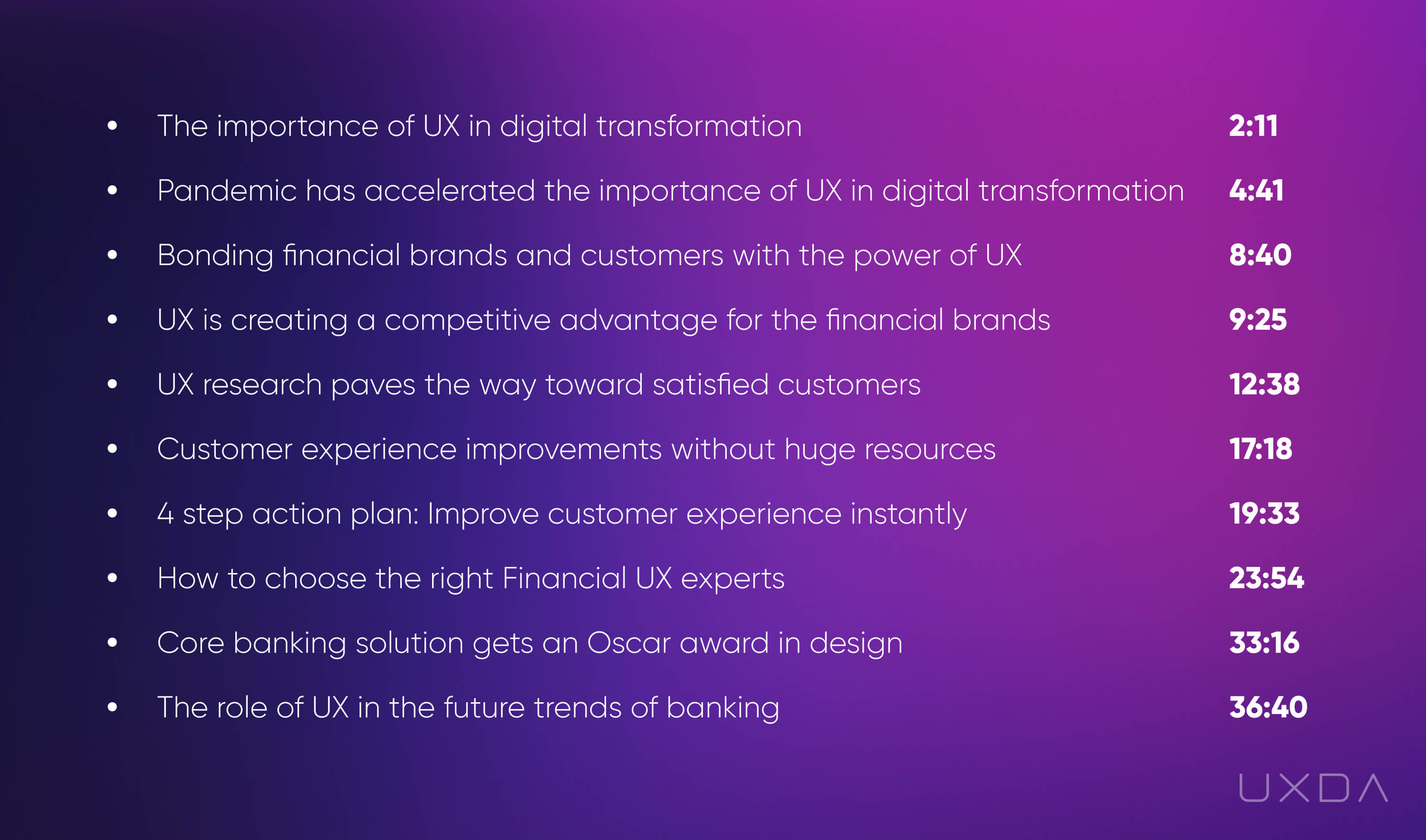
The Importance of UX in Banking Digital Transformation
Monika: UXDA was founded 5 years ago, and we know that a lot has changed since then. The importance of digitalization has increased significantly, especially lately with the global pandemic accelerating the importance of digital transformation in banking. In your opinion, how has the role of user experience in the financial industry changed throughout the years?
Alex: Just 5 years ago, only some banks appreciated the importance of customer centricity, but now it has become one of the top strategic priorities for the majority of financial institutions.
This is because the competition is growing. We see more and more new financial products entering the market every year because of global digitization, open banking, data transparency, sharing economy, blockchain and other factors. Not so long ago, the financial industry was mainly a monopoly owned by the traditional players. But, today, all of these new opportunities reduce market barriers and make launching a financial product easier than ever before.
Growing Expectations and the Importance of VALUE
A: As the number of choices rises, it's only natural that the customer expectations grow, and the way they evaluate products is rapidly changing.
Customers demand quality and value, and digital has become the main delivery channel.
In the digital age, it's extremely difficult to sell a bad quality product by creating a nice package and a catchy slogan. If the quality doesn't deliver up to what was promised to the customer, then within a few minutes thousands of people can learn about this negative experience from social media reviews.
M: And this actually works both ways - for both bad and great reviews - because the importance of referrals is more significant than ever. There are more and more products that hardly use any advertising at all, but people are standing in line to be the first to get them.
The role of user centricity is becoming more important every year.
Pandemic Has Accelerated the Importance of Digital Transformation in Banking
A: The pandemic demonstrated it very clearly. The crisis fast-forwarded the finance industry several years ahead. Before the pandemic, many financial institutions felt like, well, there are still a couple of years left until there is really no other choice than to be fully digital and user centered, so we might as well take this slow. But, then everything changed in an instant. The pandemic hit these kinds of companies the hardest because there were physical restrictions for people to visit the banking branches.
Unfortunately, there are still a lot of incumbents that perceive digital solutions as alternative delivery channels. Since this is not a key service, the choice to make only a superficial digital adoption launched weak solutions in a hurry.
And, they obviously faced a wide range of difficulties by failing to understand the importance of user centricity at the top level.
And, conversely, companies that had already started a user-centered transformation eventually were awarded much sooner than they had expected these investments to pay off.
Just imagine, there is a 64% adoption rate of financial technology services, according to the EY Global FinTech Adoption Index based on a survey of 27,000 consumers. Deloitte research shows that approximately 60% of banking customers worldwide use online and mobile banking more than a twice a month versus approximately 20% who prefer branches and contact centers with the same frequency. And, the recent Kearney survey of banking consumers reveals that more than 40% of consumers increased their use of mobile banking apps or websites during the COVID-19 pandemic.
Digital banking is no longer an alternative; it has become the primary channel.
M: I think it has never before been so critical to focus on the customers then it was and still is during the consequences of the crisis.
This unique situation really was like a test to the banks’ ability to fully serve their customers digitally, which is where the world is gradually going.
I think the pandemic itself very clearly demonstrated the essence of user centricity. In a crisis situation, everyone is primarily concerned about themselves and the well being of their families. Here, the key factor for choosing any kind of product was whether it will help to ease people's daily struggles.
Those services that took the extra step to please their customers were rewarded with gratitude and loyalty.
A: Indeed, and the same applies to our everyday lives, not just the crisis situation.
People will choose those products and those financial brands that build an emotional connection with them.
Bonding Financial Brands and Customers with the Power of Financial CX/UX
M: This is actually a great topic about the emotional connection between the brand and its customers. If we are talking about the evaluation of a company's success, then a metric called customer lifetime value is often mentioned. It helps to understand the value of investing in long-term relationships with the customers. From your perspective, what does it take to build a long-lasting relationship between the customers and a financial brand? And, what role does design play in it?
A: I think it was one of our latest articles we created together in which there were stats showing that customers require their brands to be trustworthy, caring and able to listen to their needs in order to be chosen.
M: As a reference for the listeners, just recently Alex and I co-created an article called Emerging Digital Age Challenges that Banks Can Tackle with the Power of UX. We based this piece on more than 20 different user-centricity studies and research.
I remember that customers had mentioned in one of these studies that emotional connection and a caring relationship are two of the key factors for choosing one brand over another.
So, it's clearly important to become a beloved brand in order to retain a market share in the digital age.
UX is Creating a Competitive Advantage for the Financial Brands
A: This leads us to another important question we often get asked: how is this competitive advantage created, and what's the role of design in all of this?
Here, I have to say that beloved brands are built on positive customer experiences, and these positive experiences are created by an emotional connection with the customers. Design is the methodology of integrating user centricity throughout all levels of the company with the goal of engaging the entire organization into delivering a positive experience that would create this emotional bond.
We can say that, in times when there is such high competition, the traditional players may experience uncertainty.
An antidote is to really build this emotional connection with their customers through products and service processes. In the digital age, it's really one of the biggest competitive advantages there is.
M: Absolutely, and besides, we are talking about a financial market in which there are traditional players and challengers. And, challengers are usually perceived as more advanced in terms of UX, but we can see that there is an outstanding opportunity to create value that any incumbent could offer their customers. They have huge resources, rich service experience, enormous amounts of collected data and impressive product variety.
A: Definitely. There's so much banks can offer to their customers.
All it takes is transforming a business mindset and legacy into a digital power that triumphs the financial market with something highly valuable for customers: expertise, stability and trust that's built over decades.
UX Research in Banking Paves the Way Toward Satisfied Customers
M: Though it seems clear that customer-centered products lead to satisfied clients and successful financial businesses, there are still some financial companies that might be eager to skip the UX research process and get right to the product design as quickly as possible. Also, some of the potential clients that come to us tend to think this way. What do you have to say about that?
A: Well, I do understand these companies. If it was possible to lose weight or learn a language in a few days and have lasting results, probably everybody would do that. Unfortunately, as we all know, it doesn't work that way. If we aim for a long-term and trustworthy result, it requires a significant investment of time and effort.
The truth is, it's impossible to create a product that lives up to the customer’s needs without user research. It's as simple as that. You can't create something that the customers will desire and stay loyal to in the long term if you don't know what it is or if you ignore customers.
M: I think, quite often when it comes to creating financial products, there is a cognitive bias. What I mean by that is, the financial companies seem to have one perception of what their customers need while the viewpoint of the clients is totally different. When the product is launched, these two opinions clash and don't result in a demanded financial product that turns the company into a beloved financial brand.
A: There's a great analogy that user research and UX architecture serve as a blueprint for a skyscraper that ensures its solidity and security well before the construction begins. The same applies to financial services. You can't ensure its performance if there is no blueprint.
I remember an example in our own experience. We once had an FI product with five people responsible for it. We all had a united goal: to create a digital experience that would meet the business needs and user expectations in the best possible way. One of the biggest insights throughout the project was that, at the beginning of the research stage, the people involved realized that each of them had a completely different vision of where the new product should be moving.
If this happens at the very beginning, it's possible to solve it, but if conflicts arise in the later stages, it can sabotage the product.
This example clearly demonstrates another aspect of the need to conduct research - not only of the user needs, but also the business goals. It helps to establish a united vision of what exact value the team is going to provide to the users. And, it also makes it much more efficient to move in the right direction with more power and meaning.
M: In a nutshell, the key to becoming a beloved financial brand is truly having empathy toward your customers - getting to know them, feeling their pain like your own and delivering a solution that would make their lives better and easier.
4 Step Action Plan: Improve Banking Customer Experience Instantly
A: We see that the number of financial institutions that look forward to conducting a customer-centered digital transformation is rising. But, at the same time, many believe that it requires a tremendous amount of resources and investment of time and energy, so they keep postponing it. Many ask us for our advice - where to start? And, what are the first steps to take toward becoming more customer-centered?
M: To be honest, this is really a huge, daunting misconception that has been traveling around - that in order to become more customer centered, you have to have these enormous resources. It sounds like an all or nothing approach to me. But, as with everything in life, nothing is just black and white.
Yes, becoming a truly customer-centered financial company takes time, but you can start out small without a huge amount of money and time. And, here I want to emphasize - EVERYONE can make significant improvements in their customer experience WITHOUT a large budget or huge investment of time.
In fact, for 5 years, UXDA has had this mission to inspire and educate not only financial industry professionals but anyone who has a genuine interest in UX design.
We have published around 100 articles that are full of actionable insights and tips that anyone can start using right after finishing the article.
A: Exactly! And it doesn't cost a dollar to do that!
Many are theorizing about this kind of topic, but I'd like to share a quick action plan with the people listening. This could help you to make significant improvements in the customer experience, regardless of the size of the company.
1. Evaluate the Company Culture and Mindset
The first step is to evaluate the company culture and mindset. Here, it can be helpful if the financial companies ask themselves questions such as - what's the role of UX in their business? Is it a methodology or a product package and marketing tool? Also, how does this company perceive customers? Is user-centricity a priority in the company? What's the main area of focus - profit or user satisfaction?
2. Integrate Design Methodology into the Company's DNA
The second step is to integrate design methodology and user-centered thinking into the company core. Making every process and every employee focused on delivering a solution that would satisfy the needs of the users the best way possible - without excuses and with making everyone responsible for the best service delivery possible.
3. Get to Know the Customers
The third step is getting to know the people using your product or services. Here, you don't need to start with thorough user research if there are no resources for it. It's possible to learn a lot by researching product ratings and reviews on Google Play, the App store, social media and other forums. It's also possible to ask your users directly - how do you feel about this product and service? Does it cause any struggles? What do you enjoy about it?
4. Act on the Insights
The fourth step is to compile this information, discuss it with the whole team and act on it. It's very important that employees develop the skill to view the world through the eyes of the users. Presenting the research results to them is a great way to do that. Brainstorm possible solutions, decide which ones will have the greatest impact on the overall quality of the customer experience of the product and make changes according to the available resources. We wrote a series of articles called Financial UX Dos and Don'ts. Our aim was to guide the readers through the user scenarios that usually cause the biggest pain and solve them in a way that doesn't require huge resources but improves customer satisfaction almost instantly. Has anyone detected friction? Solve it!
These are just a few steps that anyone can take right away.
M: All of the concepts mentioned, such as methodology, culture and mindset, are very thoroughly described in our articles. So, anyone who is interested doesn't have to hire an agency right away but can go and explore these articles.
We have to emphasize here that to become fully digitalized and customer centered to the core requires time, resources and a strong team of financial UX experts. But, this is only leverage, and it definitely shouldn't hold companies back from improving their experience on their own until they have the needed resources.
How to Choose the Right UX Experts for Digital Transformation in Banking
A: If we are talking about UX experts and facilitators in the financial companies, a question that often arises is - how should a financial company decide whether it's enough to have an in-house UX team, or should they outsource additional designers? And, also, what are the key principles when hiring UX specialists for a customer-centered digital transformation?
I believe that having a strong team of either in-house or outsourced UX/CX specialists is a pre-condition for becoming a financial brand that can deliver what the customers desire.
The job of the UX experts is to become the user advocates within the organization and integrate customer-centered values throughout every level and process of it.
When it comes to designing banking products, all of this gets a little bit more complicated.
Creating user experience for financial services is highly complex and sensitive work; any small mistake can potentially lead to millions in losses. To work with such services, it is crucial to have in-depth knowledge and understanding of the specifics of this complex industry as well as specific user psychology behind finances.
Domain Expertise
M: In interviews, we often get asked - what's unique about working with financial brands, and is it really the specifics of the field that require domain expertise? This is the reason why we have the financial UX design methodology in place - to have a specific approach that helps to maximize the potential of financial brands and allows them to establish long-term connections with their customers through digital products that provide an exceptional experience. It's possible to learn more about exactly what our methodology consists of in the UXDA blog. But, the truly rewarding aspect is to see it working in real-life practice.
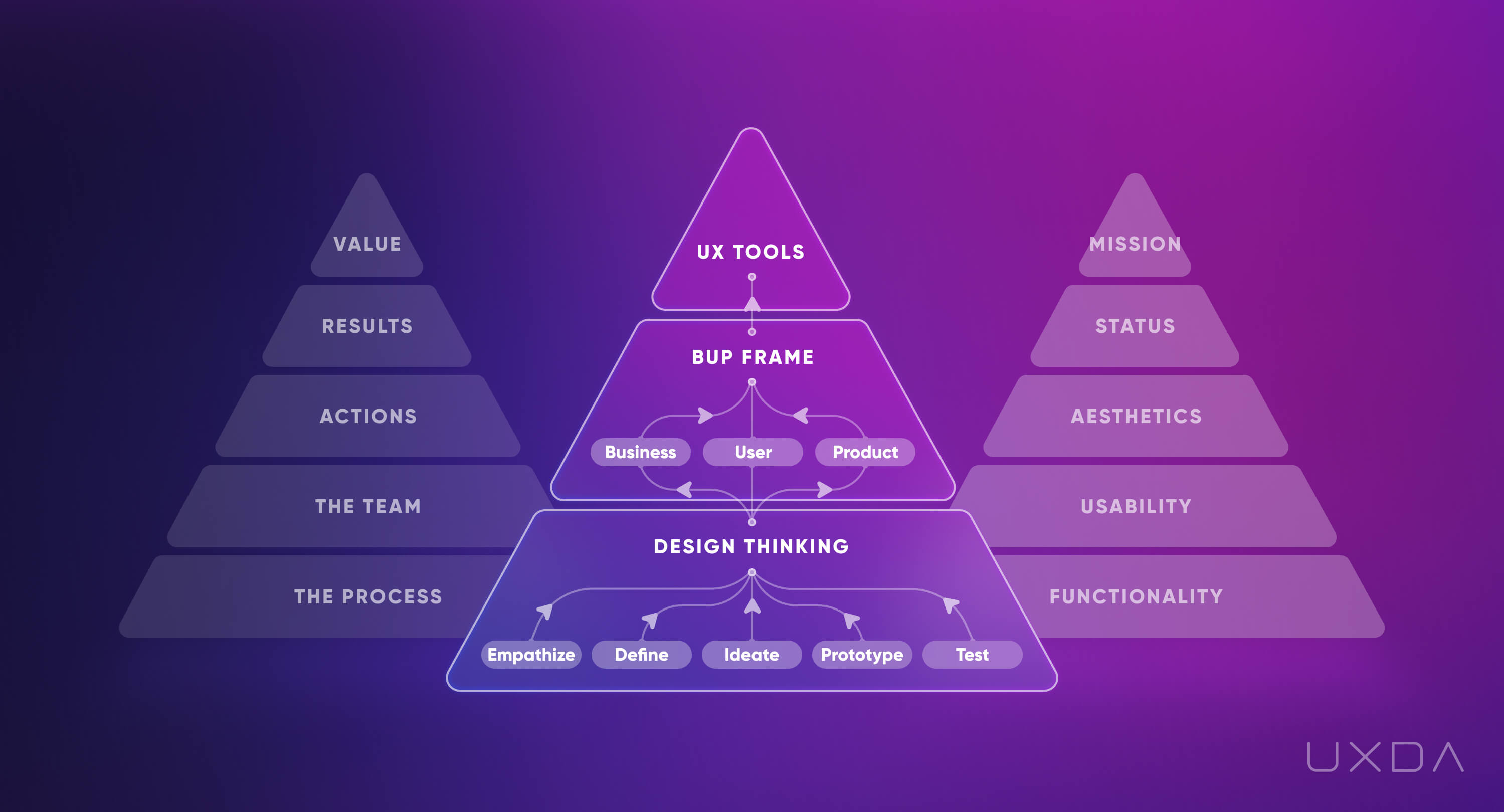
We have had such amazing success stories with our clients who have been able to transform not only their digital financial products but also the WHOLE mindset of the company, at the same time transforming in the eyes of their customers and receiving higher demand than ever before.
A: Yes, these success stories are always the most rewarding! But returning to false expectations, I have observed that, quite often, financial institutions might hire UX designers that have eye-catching portfolios in hopes that, in a few months, they'll be able to deliver an amazing app design.
The truth is, when it comes to such a specific field as finance, the ability to create an attractive design accounts for only 1% of required competence. It doesn't guarantee that it will have great usability in sync with the specific user needs and with the features that the financial product provides.
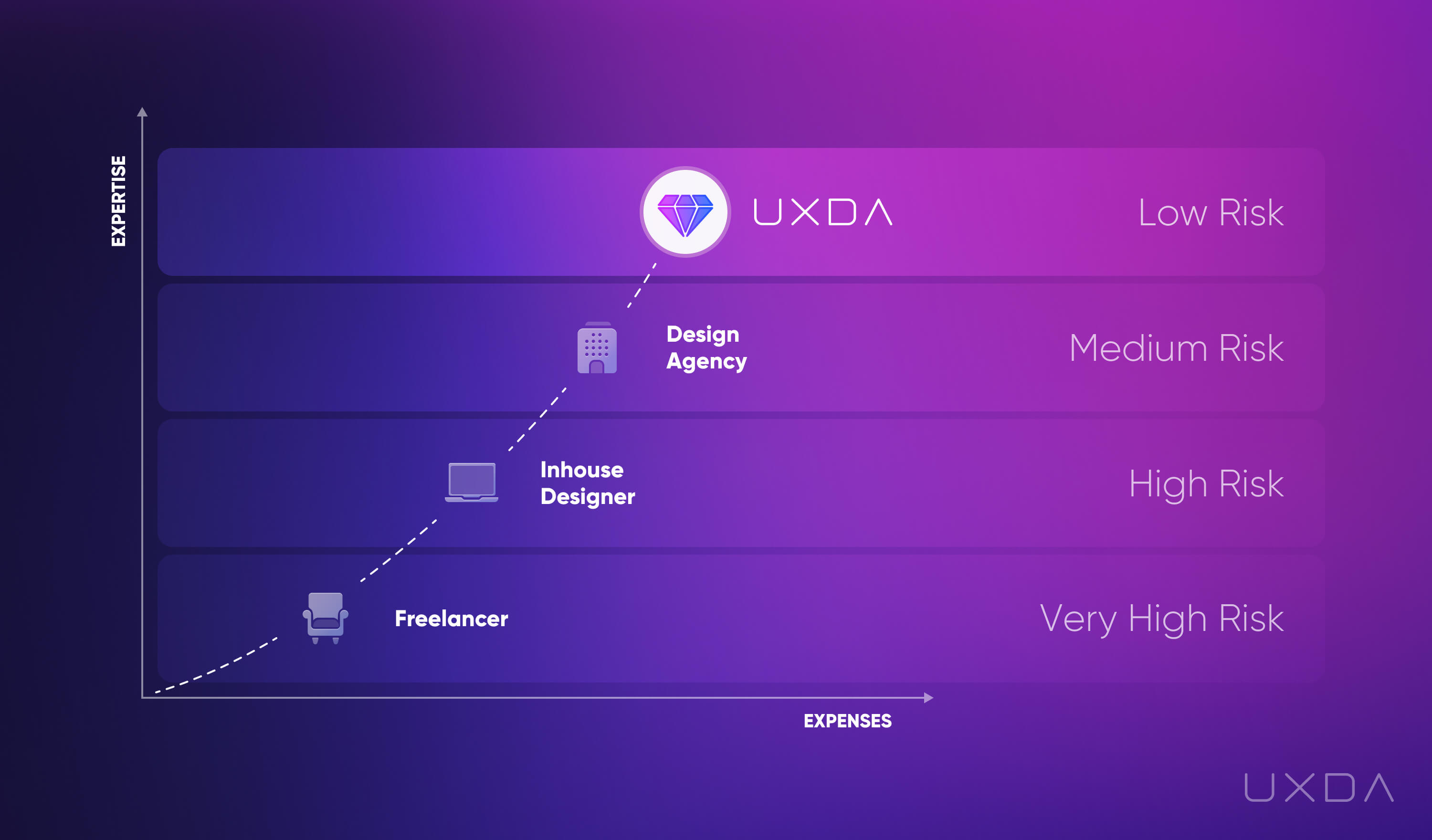
In fact, there are plenty of aesthetically pleasing but unusable digital products. So, hiring a UX designer with no knowledge of financial services might seem like a win in the short term. But, in the long term, it will probably incur a high cost, especially when it comes to banking products.
Here's a real-life example: shortly after launching an app that was created by designers with no in-depth knowledge of the specifics of the financial products, the bank’s support team started to receive thousands of calls about similar struggles. This was because what seemed unimportant to the designers was actually a very big deal in the usability of the particular service.
Often, the seemingly tiny details are the most important ones. When all of those come together, that is what truly makes the financial service experience great.
Finances are difficult for most people by default. We are emotional creatures, and rational calculation is unnatural. The job of the design and interface of the financial app is to ease this customer journey and make it simple to manage his/her finances.
M: Yes, when it comes to finance - a mistake caused by incompetence can cost millions not only in terms of money but also in customer loyalty and trust.
To avoid this, it's critically important to work with user-centered specialists with a proven track record of specializing in matching digital financial products with customer needs. It's very important to have a team of professionals who are dedicated experts in both UX and finance and have a proper financial UX design methodology in place that requires expertise in financial business analysis, financial UX research, financial UX architecture and financial UX strategy.
In summary, we could say that the success of the financial brand and its products depends on an in-depth understanding of the specifics of financial products, business strategy, marketing, psychology, human behavior and digital technology.
A: I would say that the biggest challenge is to know what kind of answers we have to seek and how to find them in the most effective way. Have the right knowledge to be able to “translate” and understand these answers and, finally, realize the extracted value through financial products that will be in the hands of the customers.
M: Yeah, that sounds almost like a motto to keep in mind. We can actually compare this to our everyday lives. For example, when choosing a doctor, most people wouldn't do it randomly. They would most likely research specialists in a specific field and choose the one who fits their unique criteria.
A Core Banking Solution UX Receives the Oscar Award in Design - the IF Design Awards
M: We have already touched on the rewarding feeling of witnessing our clients’ success stories. One such example is the huge UX transformation we did for a core banking solution for our dear client, ITTI Digital. It's special not only because of its success but also because it brought us one of the world's most famous design awards - the IF Design Award. And, I'm pretty sure this is the first time that a complex banking product like a back-office solution received a famous Oscar-like award in design. Everyone who is listening and probably knows how a banking back office looks and works will agree with me. How do you view this win, and what does it mean to you as the creator of UXDA?
A: It means a lot in a variety of different contexts. Above all, this has been one of the biggest global recognitions we have received for our work, outside of the heartwarming client reviews that fuel our inspiration daily.
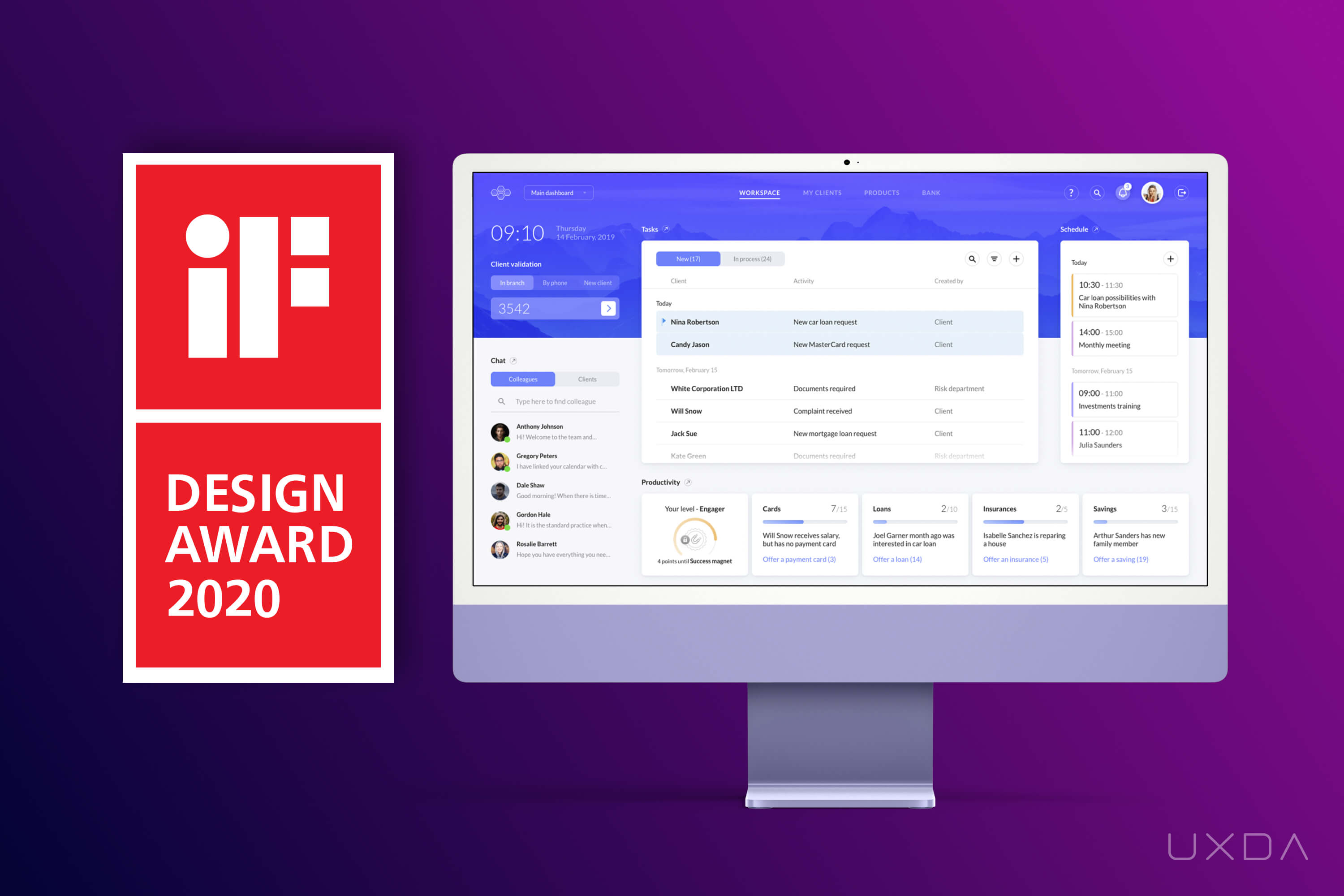
One thing we strive for in our mission is to humanize the financial industry, making it enjoyable for people - this is what we do every day.
Another rewarding thing is when an international jury of around 100 experts taps on your shoulder and shares that this is really amazing work that we have done, praising not only the visual aspect but, most importantly, how we embraced the true power of design to create an experience that disrupts the banking industry.
This core banking design is so much more than just an appearance; it transforms the daily routines of so many banking employees, as well as the service speed and convenience for the end users of the bank. This is really rewarding.
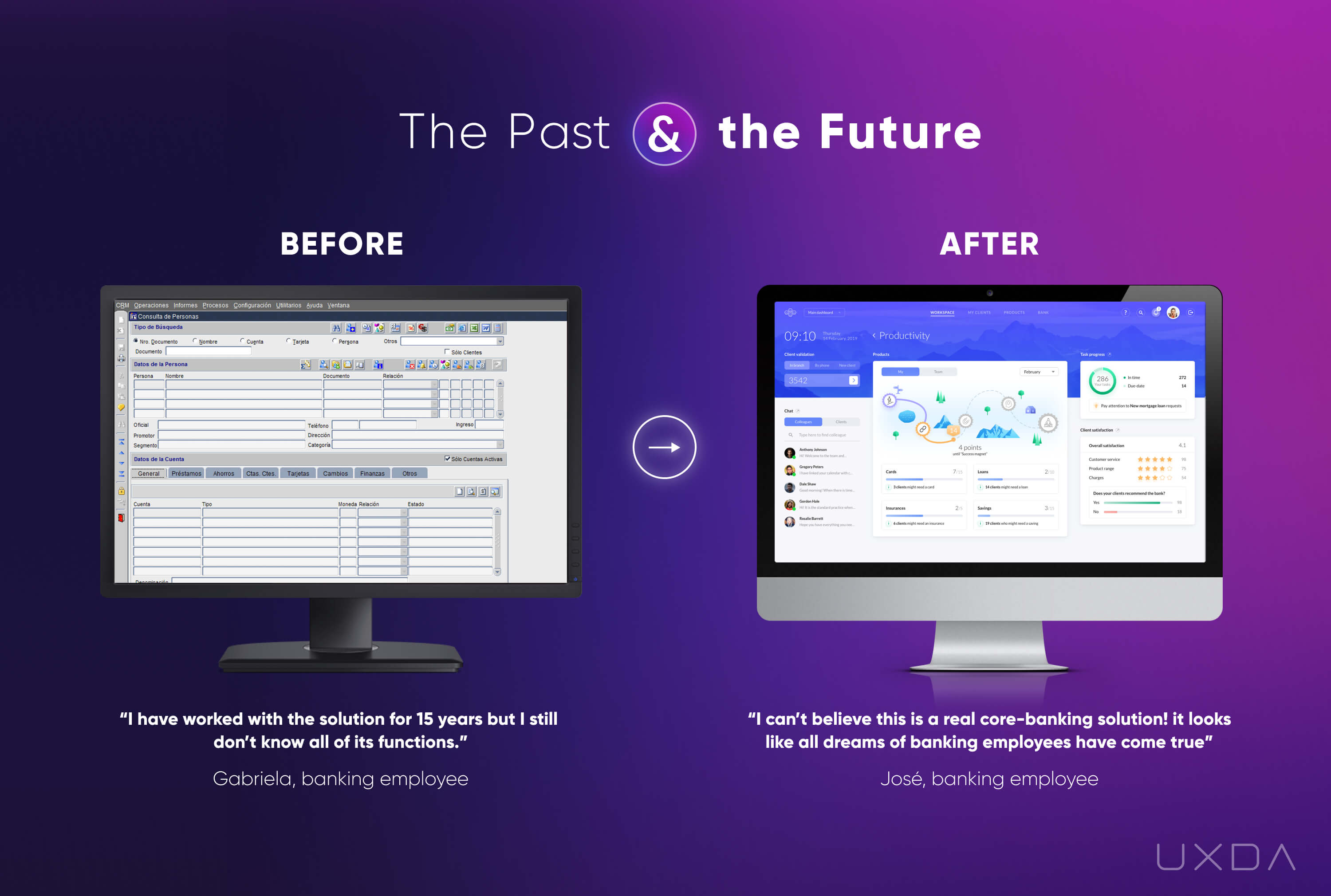
M: I think that another aspect of this joy is the fact that we were awarded alongside such globally known tech giants as Apple, IBM and Samsung. In fact, we shared the pedestal with the Apple Card for the Service Design category.
This has really been an extraordinary experience that fuels our desire to move forward with even bigger force and passion to make finances available, easy to use, and pleasant for millions and millions of people all around the world.
The Role of UX in the Future Trends of Banking
M: I'd like us to take a look in the future and talk about our predictions for where the banking industry is going in the next 5 years and what role UX could play in it.
We just recently released two case studies that demonstrate our vision of the future. The latest was our future bank concept that demonstrates how the banking of the future could look in the environment of augmented, virtual and mixed reality.

A: Yes, it's trendy to talk about the possibilities of the future, but our curiosity took us even further. As with the future bank concept, we wanted to model how a bank of the future could look. And, I must say, the interest was quite significant. The video is available on our social media and blog, for those who haven't seen it.
But, if talking about the technological improvements available in the future, those will definitely take user experience to a brand new level. Customers already demand a more personalized experience. Using big data and AI assistants, people will be able to get personalized insights and recommendations on how to improve their financial health and what products they might want to consider even before they have thought of it themselves!
Then, of course, we are already experiencing the emergence of banking super apps and neobanks that serve as a platform for endless integrations. We created our own banking super app concept that demonstrates how technological advancements can be integrated.
Other trends that we are already witnessing, such as blockchain, gamification, voice processing, biometrics, Social integration and open banking APIs, will keep on evolving, offering us brand new possibilities on how to conduct our banking.
I believe that the financial institutions that are alert to the rising changes in customers' needs will be able to prepare in advance and react in time when new technologies emerge.
M: However, it's important to remember that in a rush for an outstanding competitive advantage, many banks forget that their existing digital solutions are far from perfect and can be fraught with friction that confuses users. Before we are faced with these brand-new innovations, there is a lot that can be done right now to improve the value customers get from the already existing solutions.
This will make the transition to the future smoother and easier, as the new technologies will be integrated into the existing products, providing a superb customer experience.
Get UXDA Research-Based White Paper "How to Win the Hearts of Digital Customers":
 If you want to create next-gen financial products to receive an exceptional competitive advantage in the digital age, contact us! With the power of financial UX design, we can help you turn your business into a beloved financial brand with a strong emotional connection with your clients, resulting in success, demand, and long-term customer loyalty.
If you want to create next-gen financial products to receive an exceptional competitive advantage in the digital age, contact us! With the power of financial UX design, we can help you turn your business into a beloved financial brand with a strong emotional connection with your clients, resulting in success, demand, and long-term customer loyalty.
- E-mail us at info@theuxda.com
- Chat with us in Whatsapp
- Send a direct message to UXDA's CEO Alex Kreger on Linkedin



